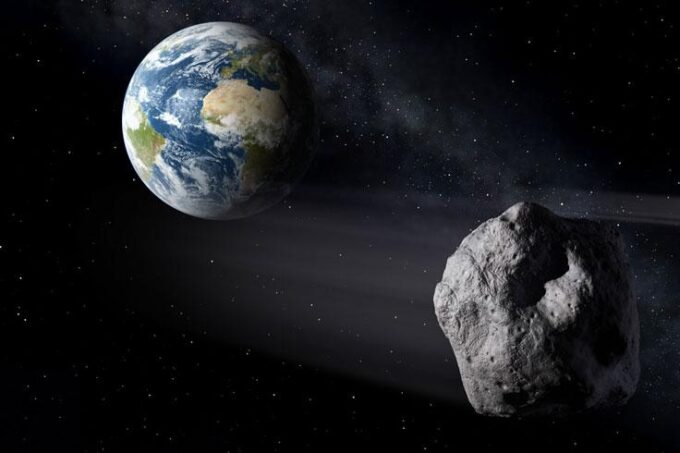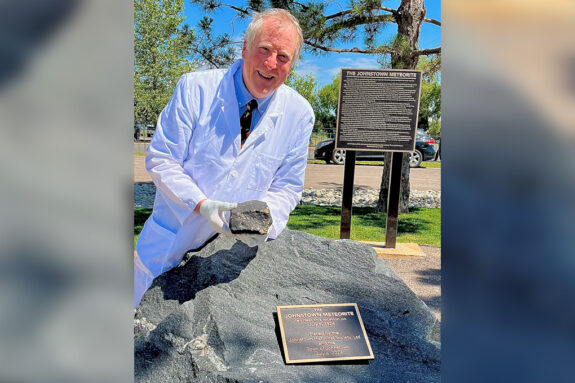MIT researchers prepare for the large asteroid’s near-Earth flyby in 2029, which could provide the first insights into how Earth’s gravity might affect its surface when it approaches.
In the Fall of 2004, a newly discovered object in the sky concerned astronomers: a large asteroid that could collide with Earth in 2029. All-sky telescopic surveys continuously scan for hazards, and even though its chances of impact were less than 3%, researchers worried that the asteroid, now named 99942 Apophis, could cause considerable damage if it did. Planetary scientists have since modeled the trajectory of Apophis and ruled out a potential impact for at least a century, assuaging anxieties.
Now, Apophis is making its closest pass before 2029, and astronomers are taking the opportunity to see how the approach with Earth could affect it. In April 2029, it will pass as close as 20,000 miles of Earth – that’s closer than some our highest geostationary satellites. While asteroids a few meters across regularly pass this close, Apophis is 350 meters across, making this is a one-in-a-thousand-year event. This opportunity will allow astronomers a chance to better characterize the body as part of hazard assessment – for example, it’s spin rate, composition, estimated density—and examine how interactions with planetary bodies affect huge asteroids.
MIT Department of Earth, Atmospheric and Planetary Sciences (EAPS) research scientist Francesca DeMeo is working with David Polishook of the Weizmann Institute of Science, as well as EAPS postdoc Michael Marsset, and Professor Richard Binzel to see if Apophis will change color.
Why are scientists interested in Apophis?
Apophis itself is a fairly typical asteroid with a common composition. The approach in 2029 makes it particularly special because we’ll be able to study the effects of the Earth encounter, and the result will be representative of many other asteroids’ interactions with Earth. During this, Earth’s tidal torques could cause measurable seismic waves in Apophis – something we’ve never had an opportunity to measure on an asteroid before. This would teach us about the internal structure of asteroids. We also expect the spin rate to change – it currently takes around 30 hours for Apophis to complete a full rotation – but we aren’t able to model exactly how it will change.
Also, Apophis has a “weathered” surface, and we expect that could change in 2029 during the close encounter with Earth – our group is particularly interested in this effect, so we’re taking measurements and making calibrations for it now.
The surfaces of asteroids are exposed to “space weather”, such as solar wind and cosmic rays. These high energy particles chemically alter the surface of the asteroid when they interact. Over millions of years the whole surface will be chemically altered. Since this is a relatively short amount of time in the Solar System, we’d expect that all asteroids should be weathered.
But that’s not the case; instead we find many fresh, unweathered ones. So what process could freshen an asteroid’s surface on such short timescales?
Our prediction is that tidal forces on Apophis, due to the close approach with Earth and its gravity, could cause seismic shaking and quakes. This shaking would jostle the grains on the surface shuffling them around or at least flipping them over. These fresh grains would be exposed and we’d see that change. Hopefully, Apophis will give us the evidence to either confirm or refute that hypothesis.
How are you investigating it?
We’re looking at the sunlight reflected off Apophis’ surface over an entire rotation. A weathered surface appears red – reflecting more at longer wavelengths and less at shorter wavelengths; whereas fresh surfaces appear neutral – reflecting similarly across the full spectrum we measure.
Our lab first took measurements back in 2004 soon after the asteroid was discovered. This was actually my first observing run as an MIT undergraduate research student, and maybe that excitement is what sparked me to continue in the field! Our MIT group also reported one of the first spectral measurements of Apophis back in January. Apophis is now much brighter in 2021, allowing us to take the calibration measurements we need for the “pre-encounter” picture.
To help us confirm that Apophis is currently weathered across the entire surface, we’re using the 3-meter NASA Infrared Telescope Facility, located at the Mauna Kea Observatory in Hawaii. We’ll then compare our results to the “post-encounter” ones we collect in 2029. If there is a difference, it should be crystal clear.
Do you have a hunch about what you might find, and what it could mean?
What would be most exciting is if the measured spectral slope changes from red to neutral after the 2029 encounter.
If we don’t see any change that means one of two things, either Apophis didn’t come close enough to freshen its surface. (Although, I wouldn’t want it to come any closer!) Or, planetary encounters just aren’t that effective to do so, and its due to a different process. A second leading theory is that asteroids shed some of their surface when they “spin up” and rotate so fast that grains escape the surface. That change in rotation rate is common for asteroids due to radiation from the sun that is later reradiated from the asteroid’s surface causing changes in angular momentum over time. So, whether Apophis surface changes or doesn’t, the implications will be important either way!
Story Image: An artist’s illustration showing a near-Earth asteroid passing by Earth. (Credit: NASA / JPL-Caltech)



